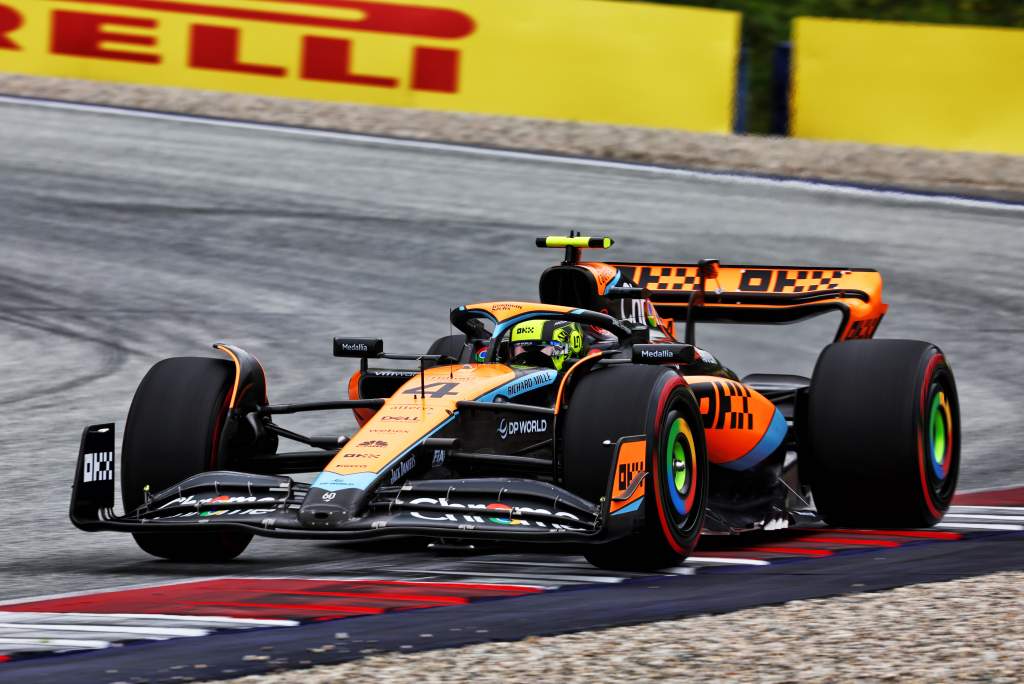Up Next

McLaren has really gone to town on its Formula 1 update package for the Austrian Grand Prix weekend. Other than the front wing, most of the other air-licked body surfaces that we can see have been altered in one way or another.
Most of it, but not all, is influenced by Red Bull – but why not when the RB19 is the clear best car? The one thing we can’t see much of is the underfloor, which I’m pretty sure had some surface treatment as well – but we will have to wait for another day to be able to comment on that area.
Perhaps the most surprising thing is McLaren describes this as just 50% of the upgrade package that will be phased in over three races, with another 25% at Silverstone next weekend and the rest at the Hungaroring two weeks later. Given how much has changed, it’s hard to see how much more can be revised but McLaren clearly sees there’s big scope for development having previously modified its floor philosophy with the upgrade introduced for the Azerbaijan GP at the end of April. And all this within the current cost cap…
Fortunately as McLaren accelerated production to have a set of parts and spares to run on Lando Norris’s car, team-mate Oscar Piastri is running the old specification. That makes it easier to compare both the look and the performance of the cars.
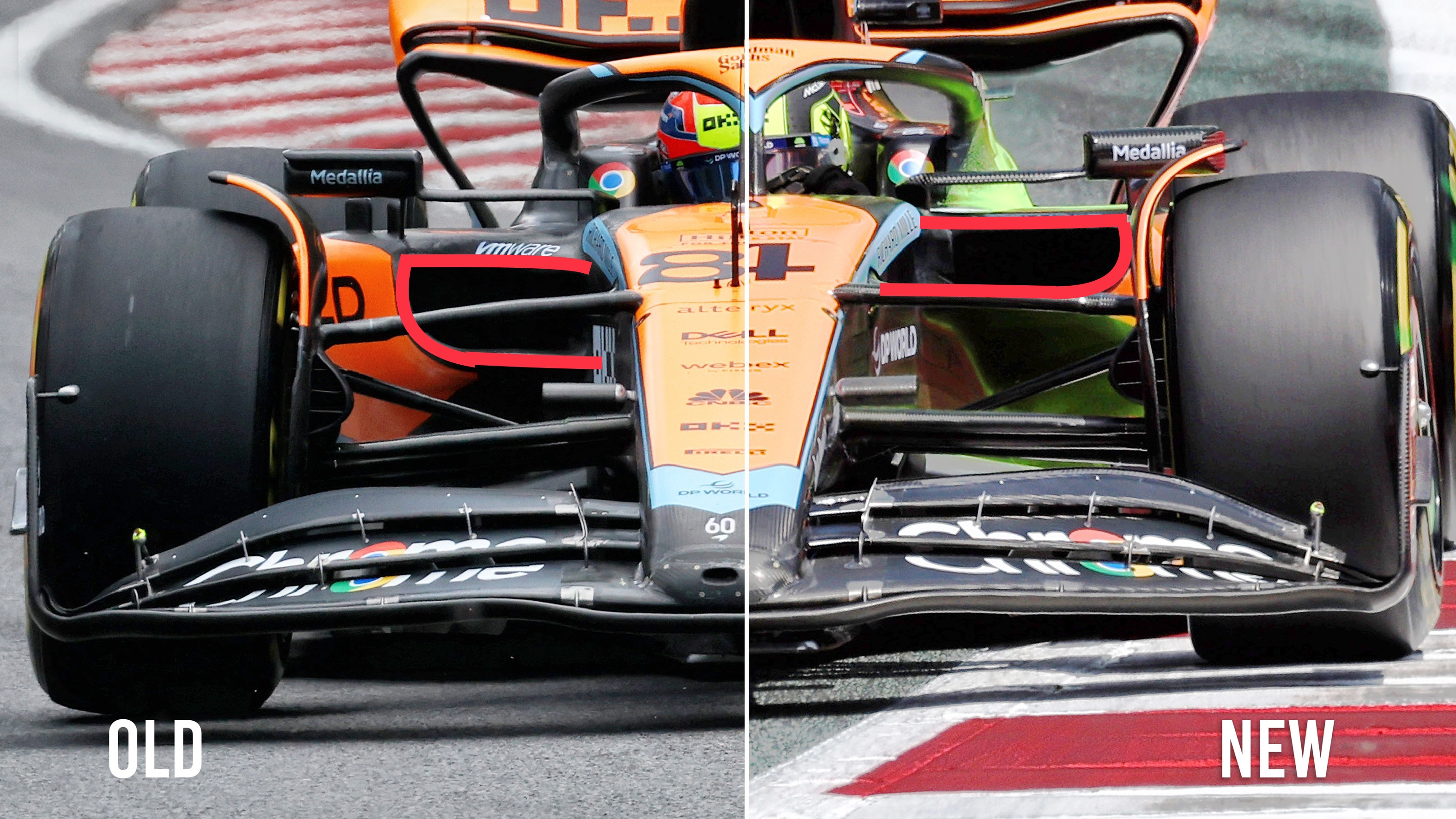
Starting at the front, because that’s the first part of the car that ‘sees’ the airflow, the front wing doesn’t look visually too different to the previous version. That was subtly upgraded for the last race in Canada and was conceived to produce more load, so that was almost an early first part of this package that optimises the car around the airflow structure this created.
The first significantly noticeable difference is the radiator inlet at the front of the sidepod, which has a definite Red Bull influence. By reducing the opening profile of the leading edge of the sidepod, McLaren has increased the height of the inlet and made it into more of a letterbox (highlighted above with red lines).
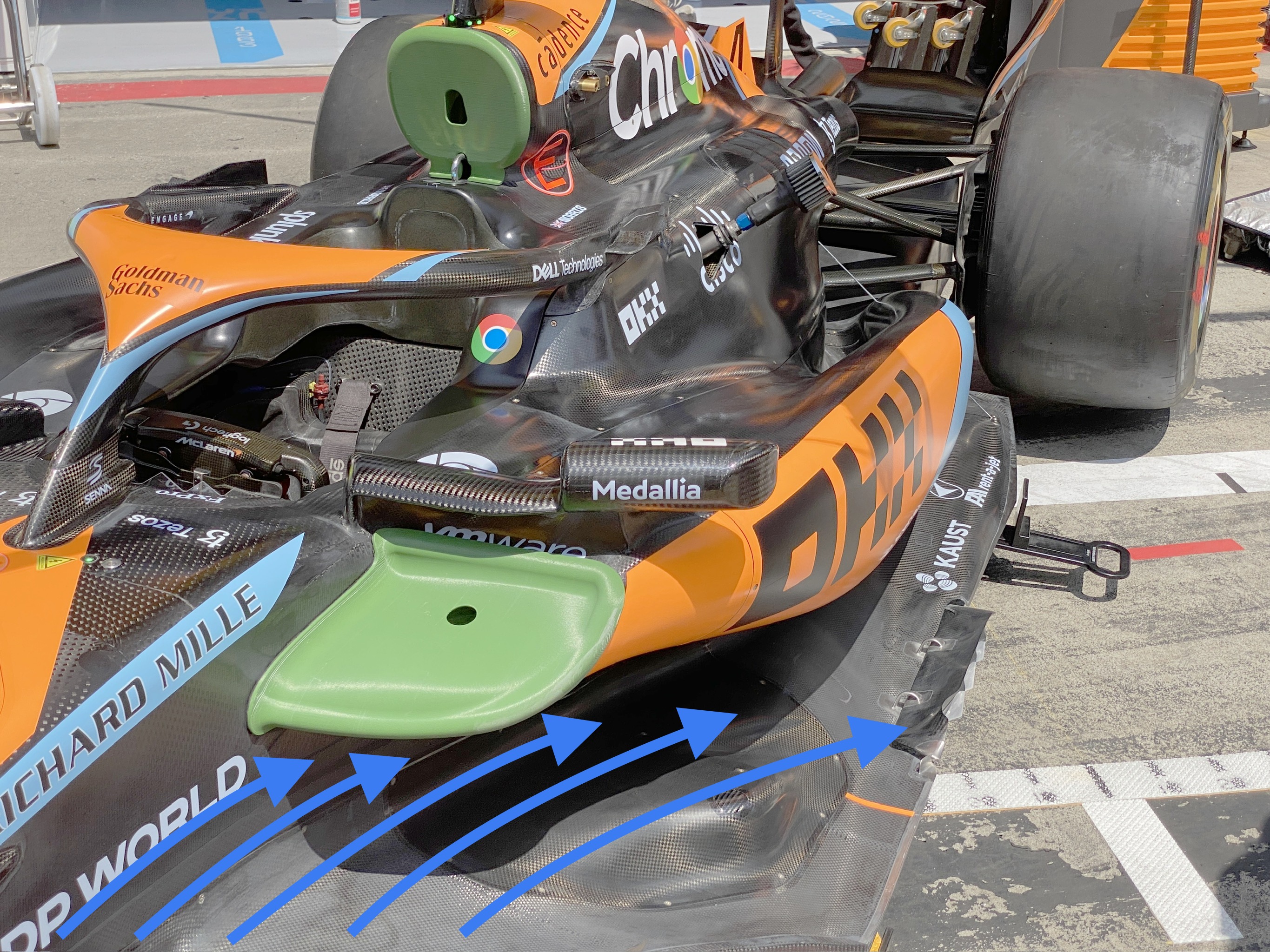
This increases the sidepod undercut volume (blue arrows) to allow more airflow to go through that area at higher speed. This will improve the scavenging effect this airflow will have on the front corner of the floor. This will in turn improve the performance of the diffuser.
The green parts we see here on the airbox inlet and sidepod inlet are plugs used to stop anything from getting dropped into these areas when the car is in the garage. The vivid green colour is to make them highly visible because you don’t want to attempt to go out on the track with these still in place.
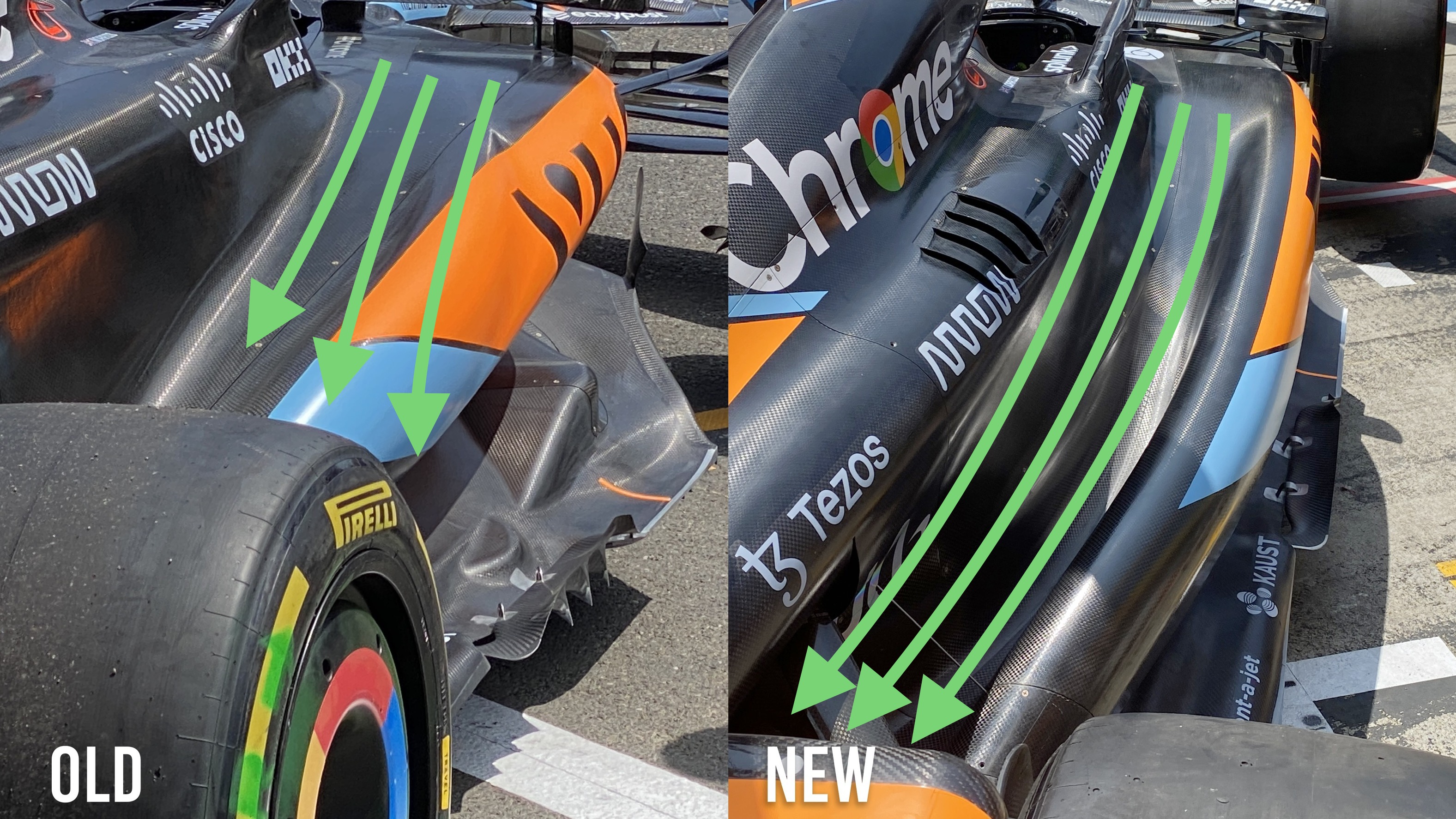
With the increased height in the radiator inlet opening and the lower inlet surface extended forward, McLaren has taken some influence from Alpine in creating an increased gutter (green arrows) where the top surface of the sidepods blend into the chassis and engine cover sides.
This is to allow more of the airflow that goes over the top side of the sidepod to influence the beam wing and diffuser nearer to the centreline of the car.
It also creates a channel for the excess radiator flow at high speed when the radiator system just isn’t able to flow the mass airflow that is thrown at it.
This excess flow will vary from track to track as the cooling requirements change, but in general it will start to increase from something like 200-240km/h, so above that speed when the car is getting closer to the ground ride height-wise and the underfloor and diffuser are working harder producing more downforce this can reduce the risk of airflow separation on the underfloor surface. This can turn into porpoising very quickly.
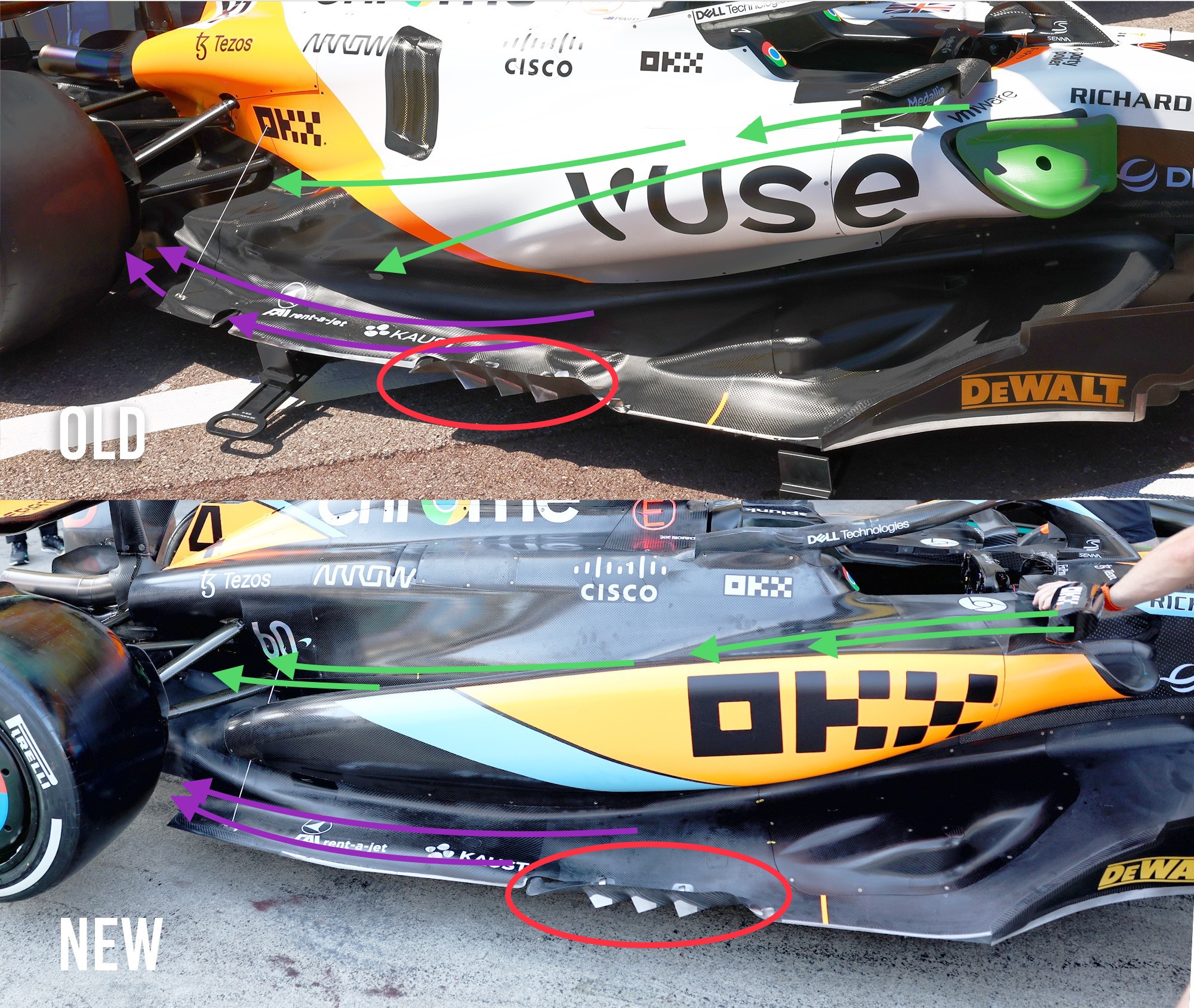
The front corner of the underfloor detail (red ellipse) is again very similar to the previous version. But it’s further rearward that the floor edge detail has changed. McLaren previously had a small inlet to allow the upper floor surface flow to connect up to the tyre squirt as the tyre rotates onto the track surface (magenta arrows). This duct would have created an air cushion between the undersurface of the floor and the ground, reducing the potential for on/off sealing.
But with the revised airflow structure over that complete surface, McLaren has now gone for a more mechanical seal. I’m not a great fan of this as it can very quickly lead to porpoising problems. However, all the teams seem to experiment with varying floor edge detail changes so it isn’t a black-and-white situation.
I have also added the green upper surface flow arrows to show how this gully changes the flow in this area.
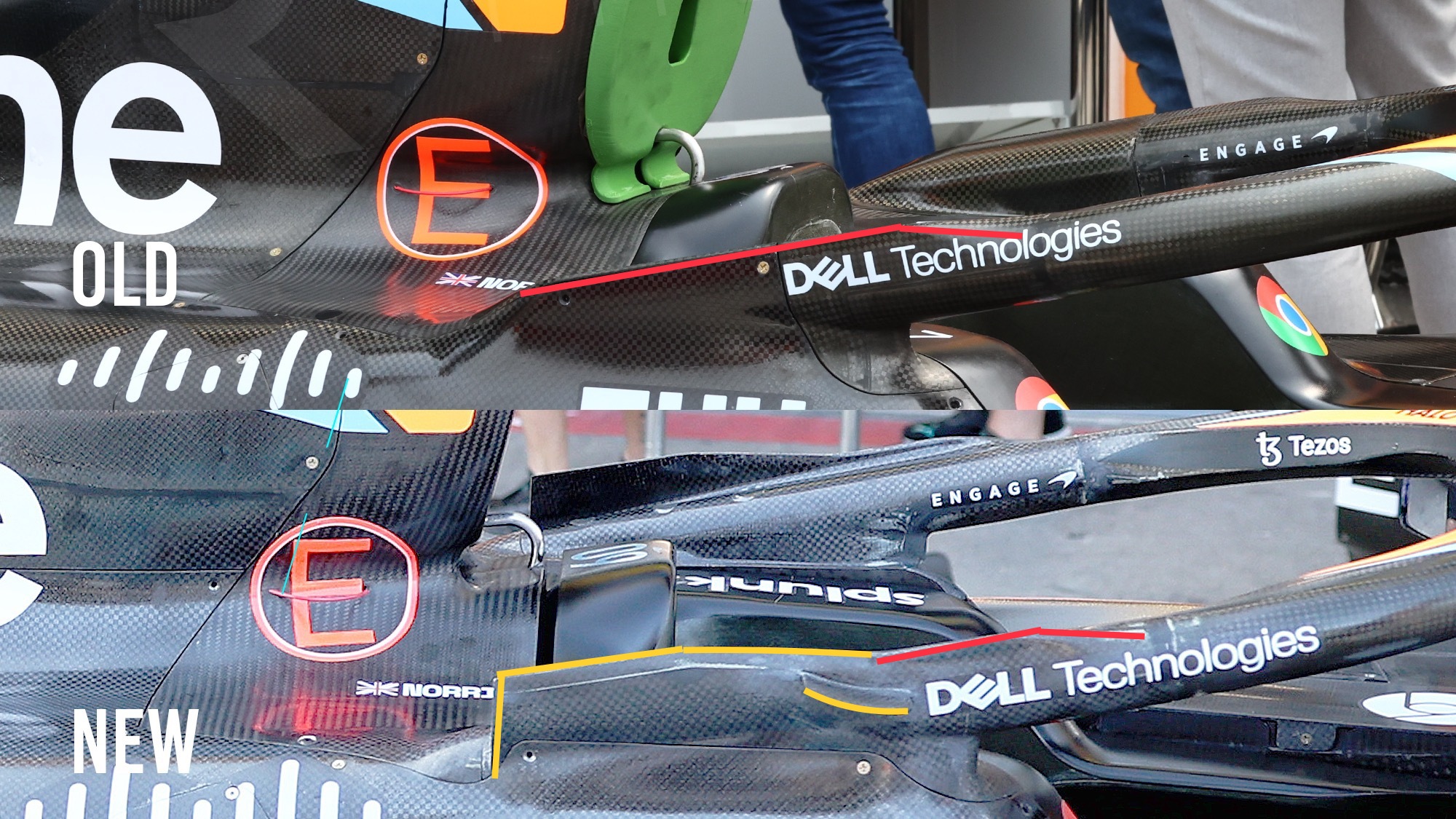
To improve the airflow through the centre line of the car even more, McLaren has also had the time and inclination to revise the fairings on the upper surface of the trailing edge of the halo. Small details like this can easily get missed when embarking on a major upgrade but, in these days of such restrictive regulations, it is about adding up all the tiny incremental gains that give you the total improvement.
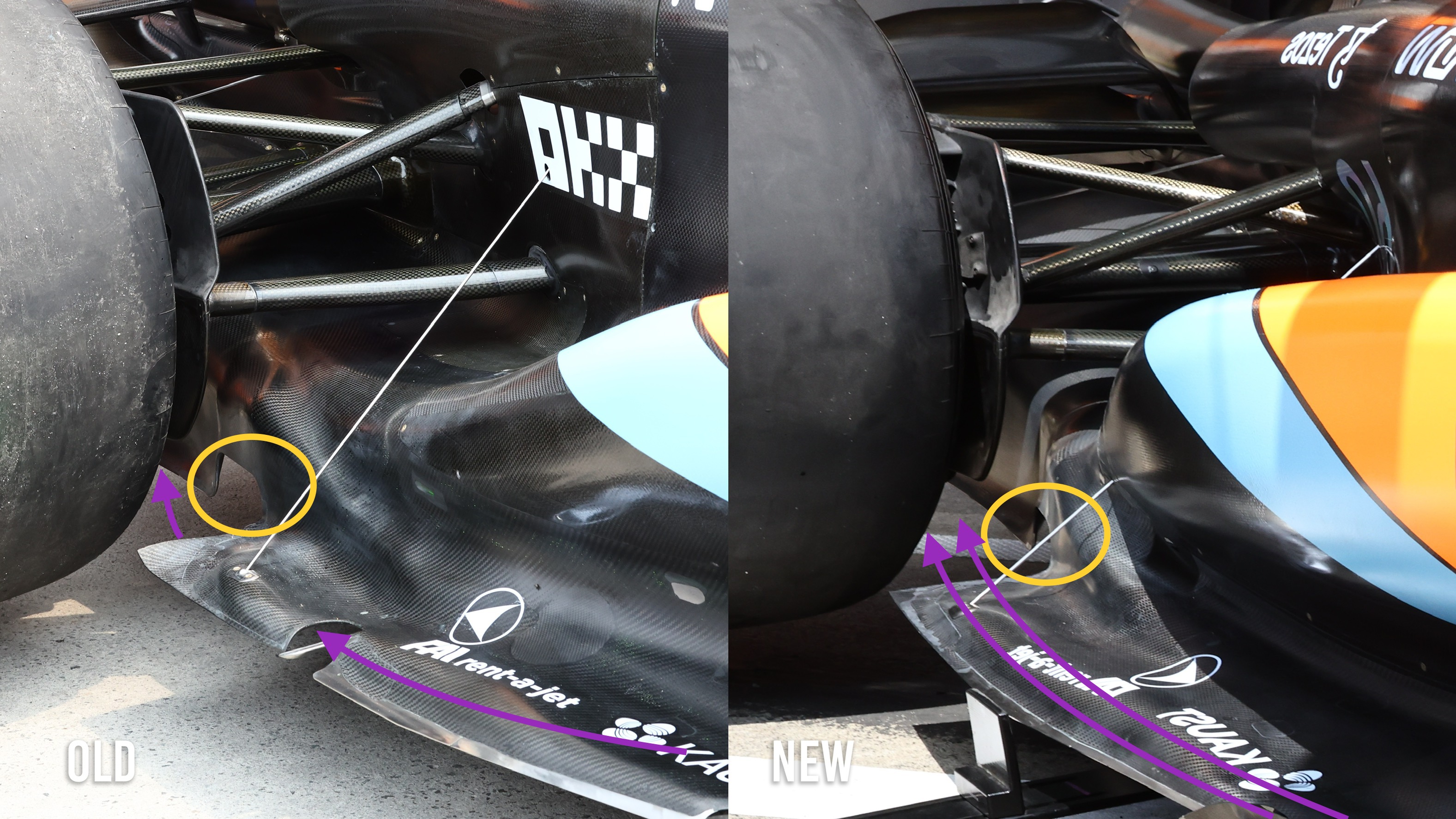
The small ‘mousehole’, as it’s been christened, on the lower edge of the diffuser side wall (yellow ellipse) allows the low pressure in the diffuser to pull that tyre squirt flow inboard of the tyre contact patch. By doing this, the floor’s outboard edge sealing area works more efficiently.
Most teams have a small tunnel in this area to reduce the flat surface area. The bigger the flat surface area, the more on/off the sealing would be as the gap to the ground changes with speed, roll, braking and bumps. This means you want to minimise the effect these changes would have on the car’s underfloor performance.
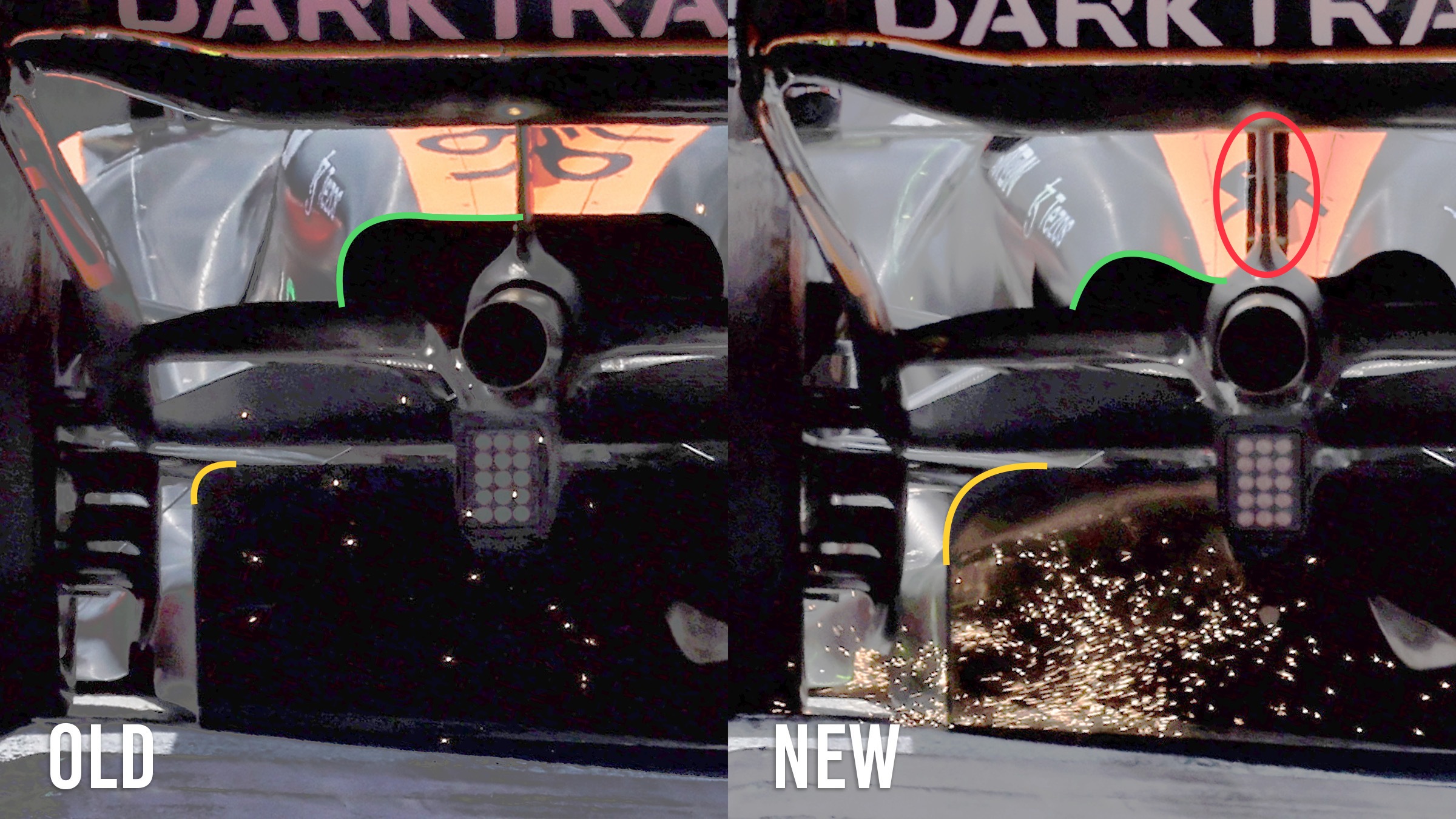
As I said at the beginning, it all starts at the front and ends up at the rear. There are some small changes to the trailing edge of the diffuser, whereas Red Bull has gone to a sharper corner on the sidewall-to-top-surface intersection of the diffuser, McLaren has gone the other way and increased this filler radius (yellow highlights).
I’m pretty sure that this is part of a much larger underfloor geometry change. Unfortunately, we are not privy to seeing that area so we have to assume that McLaren has followed the inspiration that the pictures of the Red Bull hanging from a crane in Monaco would have generated.
McLaren has also reduced the size of and lowered the cooling outlet on the trailing edge of the engine cover (green highlight) on the centre of the car. To work in tandem with this size reduction, it has also opened up a slot (red ellipse) on the trailing edge of the centreline spine of the engine cover.
This slot is just in front of the central rear wing support structure, so will have minimum influence on the performance of the upper wing, whereas the reduction on the main outlet should improve the performance of both the beam wing and upper wing.
Overall, this is a very tidy and comprehensive update. It will probably be Silverstone before we see the full effects of this upgrade, especially given both drivers will have it along with another 25% of the overall package. Silverstone is a real car and driver circuit and a place where the cream can really rise to the top – something Norris has already started to do this weekend. Bring it on!


